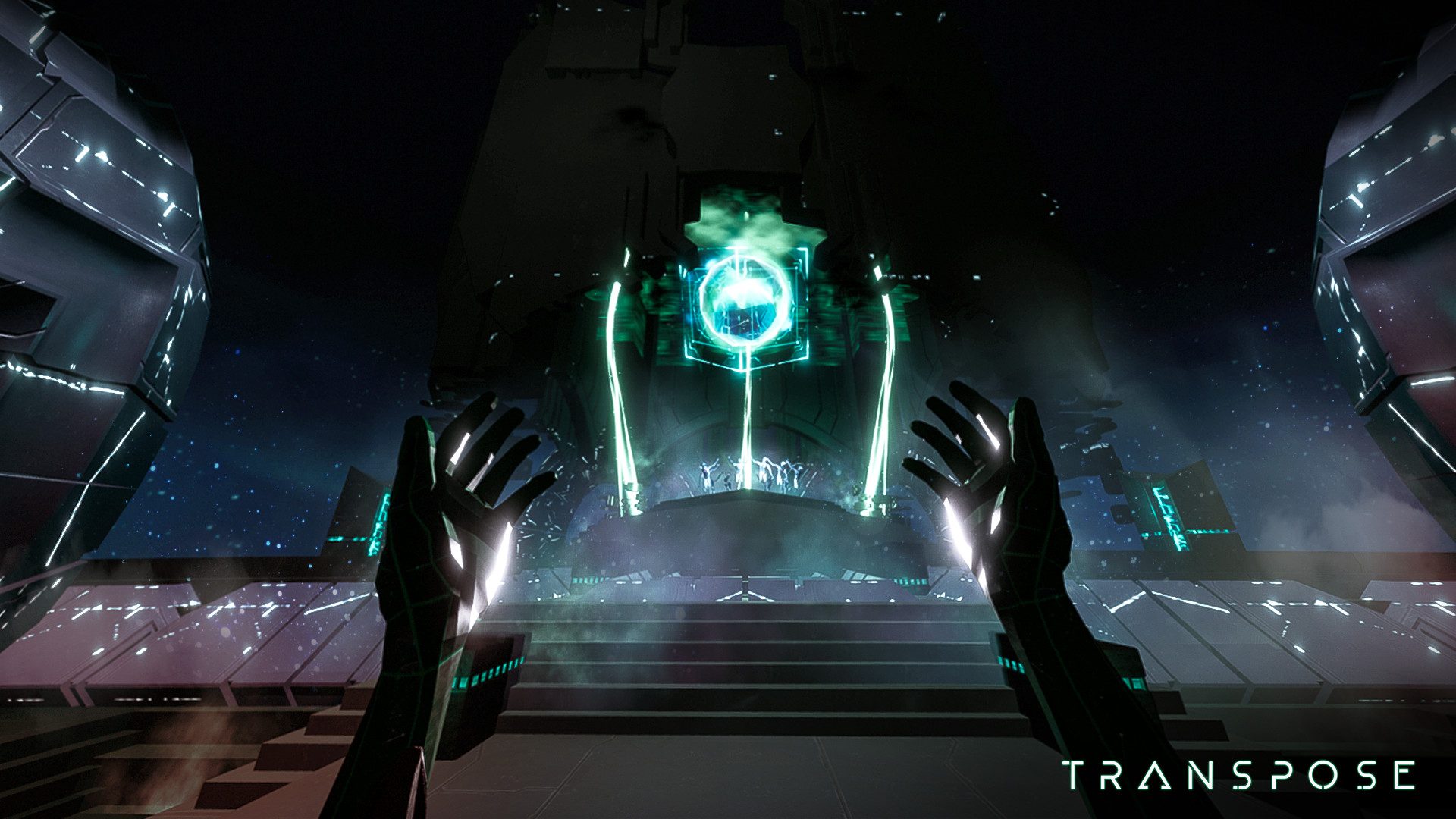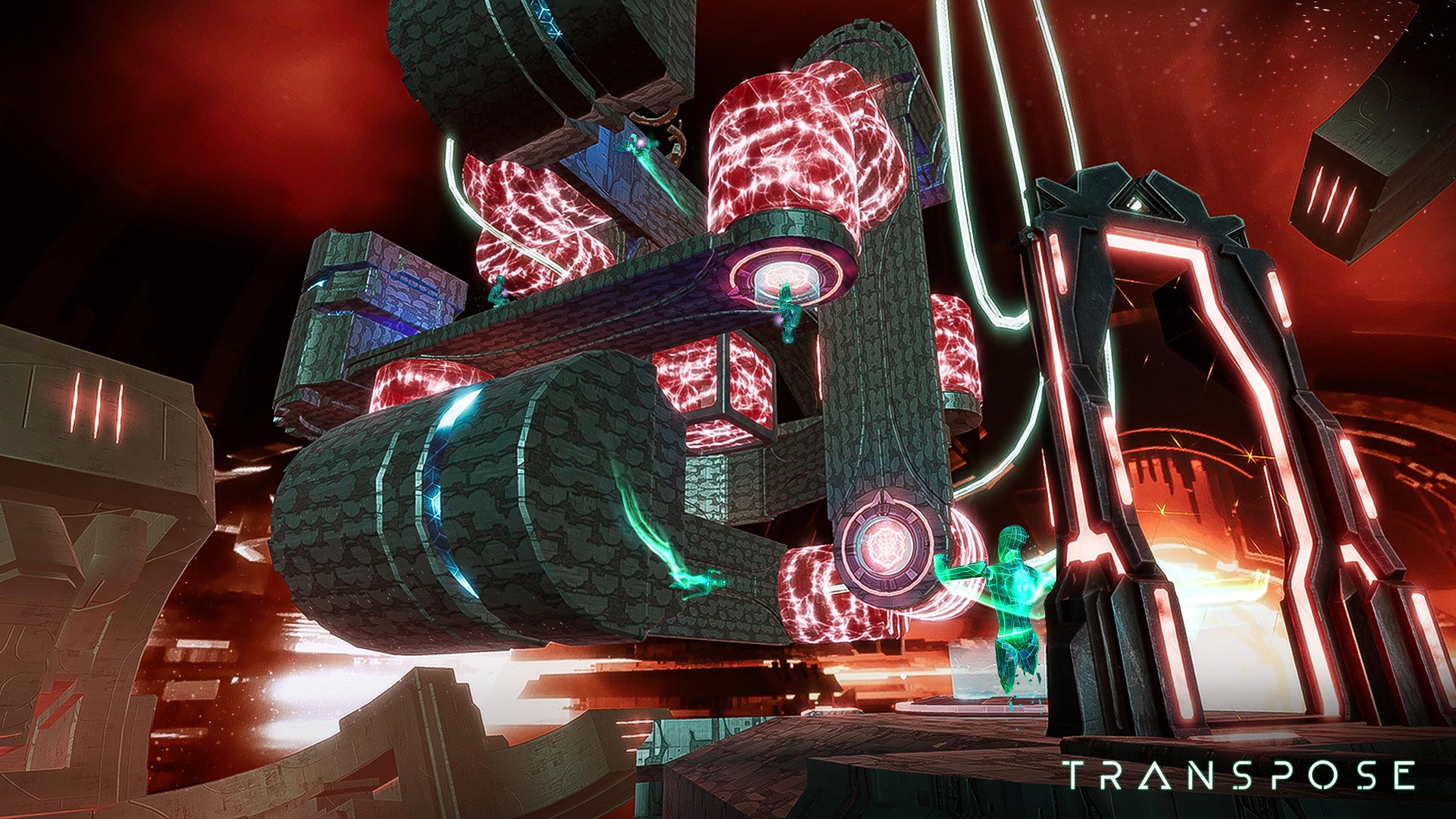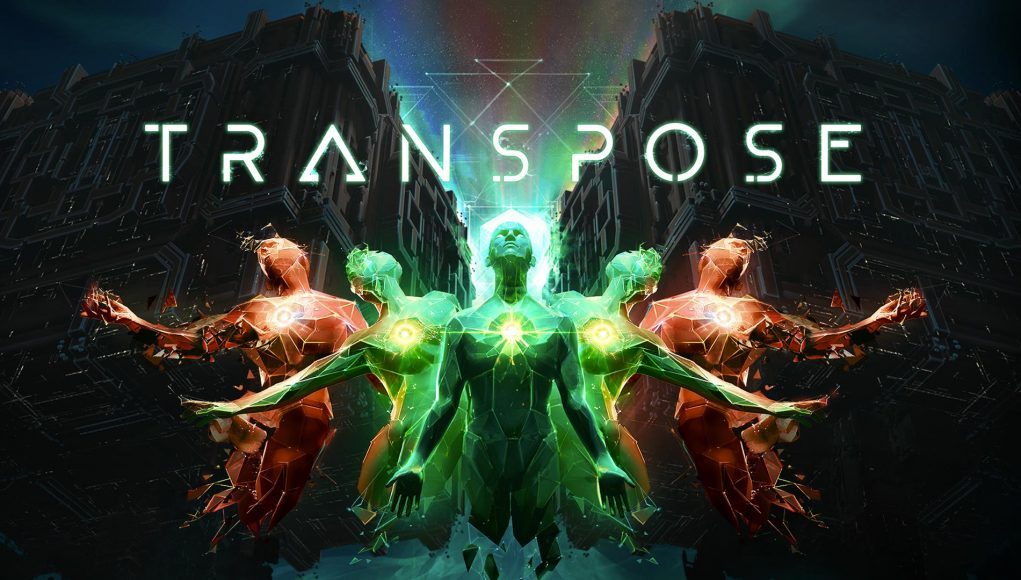Even though Transpose (2018) is a single-player puzzle game, you’ll have to master the art of cooperation to solve a staggering number of its four-dimensional head-scratchers. Transpose is punishing, frustrating at times, but ultimately a capable and refreshingly innovative entry into the VR puzzle genre.
Transpose Review Details:
Developer: Secret Location
Available On: Steam (Vive, Rift), Oculus Store (Rift), PlayStation Store (PSVR),
Reviewed On: Rift
Release Date: November 6th, 2018
Gameplay
In Transpose, your task is deceivingly simple: enter the portal to each standalone puzzle room, put the block(s) in the block-shaped receptacle, and exit the portal to the overworld—rinse and repeat across the game’s three worlds. Predictably, this is easier said than done.
The game makes you think both spatially and chronologically as you record successive versions of yourself, called ‘Echoes’, that help to complete a small portion of the task at hand. This includes real-time motion capture, so you can accurately toss your future self an all-important block, catch it, and give your past self a high-five for doing such a great job.

To start a recording, you exit a room’s primary launch pad; multiple pads are strewn across the level’s topsy-turvy, M.C. Escher-style architecture so you can tactically start your next echo recording from somewhere else. This lets you, say, pull a lever to slide a barrier that then allows a future you to enter a room to take a block that you then throw to another version of you that takes that block and places it on a moving platform that takes it past a force field to take it to another version of you that has to throw it down a shaft to another you … you get the point. The echo mechanic provided a much more solid experience than I thought it would initially, and I walked away happily surprised at how good it worked.
Transpose is complex, difficult, and rewarding enough to keep working for hours on end. You’ll probably need more than eight hours to complete the game’s 30 levels, each of them more punishing than the last.

I found the difficulty level spiked noticeably around the end of the second world, which regularly required more than four echoes working in tandem to complete. The further your progress in the game, the more echoes you’ll have at your disposal, and the more you’ll be expected to use them, with the later levels sometimes needing up to eight of your well-timed, well-positioned echoes. You can both create and destroy echoes, but just make sure you’re not killing off a vital link in the chain of actions leading to victory.
In the video below, I accidentally deleted one of my echoes while trying to reset my starting position, making me have to re-catch a block that had already been caught in the past. Thankfully, the screw up didn’t set me back at all, as my past selves were timed well enough so I could grab both blocks in one fell swoop.
Even though some puzzles can be solved more cheaply than the developers probably intended, it’s nice that the game doesn’t arbitrarily stop you from finding an alternative solution or even brute-forcing a win, oftentimes accomplished by aiming a long-shot to the goal that might otherwise be reached with a few more iterative steps. That said, some levels do require you to make solid throws, which can be frustrating at times, as there’s no aim assist, and no way to retrieve a fallen cube without killing your current echo and restarting the recording from where you spawned last.
There’s no points, no penalties for using all of your allotted echoes, and no timer. It’s the game’s sheer complexity that you’ll have to butt your head up against. I would suggest spreading out gameplay to cover multiple days as you hack away at each puzzle, learning exactly what unique tactic you’ll need to muster. Despite the expected frustration of trying to solve a complex, well-built brainteaser, there was some minor frustrations that I’ll get to in the Immersion section below.
Immersion & Comfort
As a pure puzzle game with no real narrative to speak of, Transpose relies mostly on its atmosphere and the complexity of puzzles to keep you engaged. I think there could have been more room for an overarching narrative besides the game’s main task: solve puzzles to open up doors to new puzzles, although if you’re playing just to remove the plaque from your squishy brain, but not for a big mystery to uncover, then you’re probably in the right place with Transpose.

Visually speaking, the broad strokes are definitely there, but it lacks a graphical polish that might otherwise make Transpose even more visually engaging. Even on high settings, it feels like there’s just a little more room for higher-quality textures, and both lighting and particle effects to tie together the alien, high-tech setting of the game. All in all though, it’s a visually stimulating enough.
Unfortunately object interaction isn’t as rock solid as I would have liked. The blocks are much more bouncy, and levers and knobs feel a little wishy-washy in your hands than they should be for an object-focused game. It wasn’t a showstopper in the slightest, but it did take a while to get the hang of.
Loading screens are everywhere, but they’re at least filled with helpful tips, level names, and some somber Confucian-style proverbs that help fill the time between entering a portal and getting into the puzzle.
Transpose relies upon snap-turning, and makes use of both head-relative smooth locomotion and teleportation at times, the latter of which is vital in traversing the game’s many floating platforms. With an adjustable FOV limiters, all of this makes Transpose ultimately a very comfortable experience for most users.
There is however no seated option, so some instruments will require you to reach to your max if you’re playing from a chair. It can get physical at times, what with the throwing, catching, and stretching to grab a block right on the edge of a platform too, so you may want to stand for some levels if you’re able, although it’s not required.







